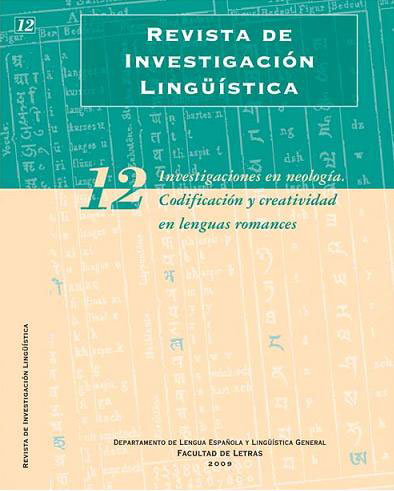¿Neologismo o no? Ensayo de clarificación de algunos problemas de incorporación
Abstract
The concept of neology suffers from some ambiguity in its defi nition, which leads to several problems in identifying new words or usages from a lexicological viewpoint. In this article three of these will be examined and solutions envisaged. The fi rst point concerns the actual aim of the lexicological project in hand: is it to study lexical creativity (in which case all neologisms detected are analysed, be they hapax, foreign words, in-group speak, etc.) or is it to study how the actual lexicon of the language is changing? In the latter case, only those words which are to a certain extent in use in society will be analysed. Secondly, new means of identifying neologisms make it possible to go beyond the observer’s gut feelings. It is common knowledge that such criteria are subjective, as the variation in nomenclature of dictionaries readily attests. Current IT tools,such as large corpora (in particular from the press) and search engines, prove more reliable. Thirdly, purely linguistic tests can be used as useful adjuncts to IT tools, since syntactic clues can also indicate instances of changed usage, and thus neology. In the case of syntagmatic constructions, there is the issue of deciding whether syntactic criteria of combination suffice, or if there are specifi c criteria for deciding what makes up a lexical unit. Frequency of use tends to lexicalize syntagmata (syntactic criterion). In all cases thought must be given to the task in hand, since each example is a case in itself and care must be taken to avoid overhasty or automatic conclusions.Downloads
-
Abstract1912
-
PDF (Español (España))828
The works published in this magazine are subject to the following terms:
1. The Publications Service of the University of Murcia (the publisher) preserves the economic rights (copyright) of the published works, and favors and allows the reuse of same under the license of use indicated in point 2.
2. The papers are published in the electronic edition of the magazine under a Creative Commons Attribution-NonCommercial-NoDerivative 3.0 Spain license (legal text). Papers may be copied, used, disseminated, transmitted and publicly exhibited if the following requirements are met: i) The authorship and the original source of its publication (magazine, editorial and URL of the work) must be cited; ii) The works cannot be used for commercial purposes; iii) The existence and specifications of this user license must be explicitly mentioned.
3. Self-archiving conditions. Authors can electronically disseminate pre-print versions (version before being evaluated) and / or post-print versions (version evaluated and accepted for publication). This makes possible its circulation and diffusion earlier and with it a possible increase in its citation and reach among the academic community. RoMEO color: green.









